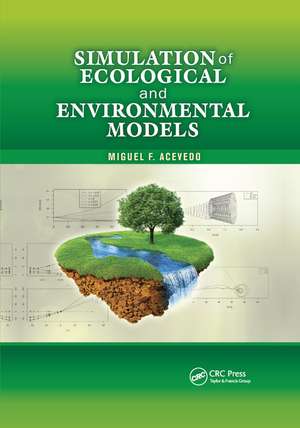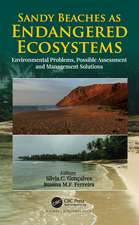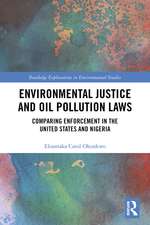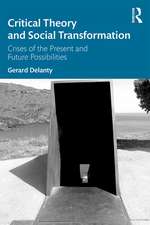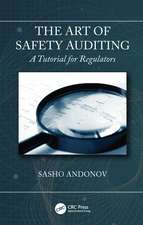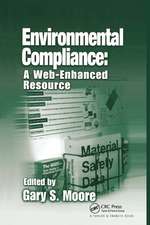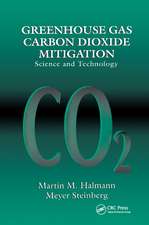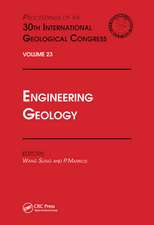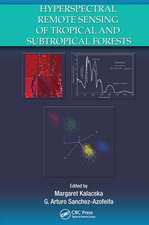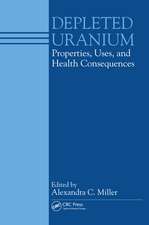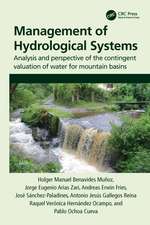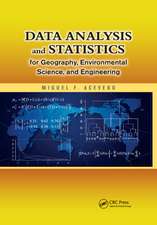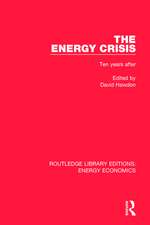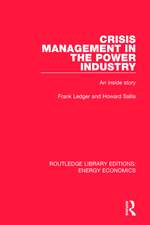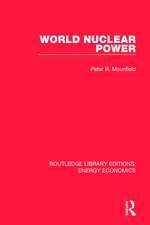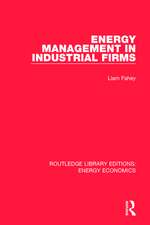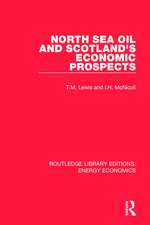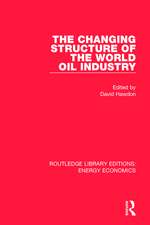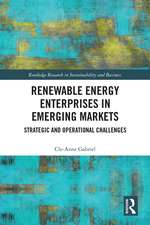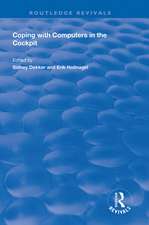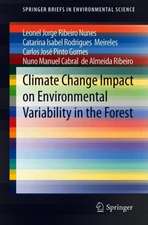Simulation of Ecological and Environmental Models
Autor Miguel F. Acevedoen Limba Engleză Paperback – 10 dec 2019
Learn How to Use a Broad Range of Environmental Models
The textbook is organized into three parts to allow greater flexibility using the material in various countries and types of curricula. The first part provides a tutorial-style mathematical review and a gentle introduction to the basics of R software. The second part explains the fundamentals of modeling methodology through one-dimensional models. After a review of matrix algebra, the third part progresses to multidimensional models, focusing on structured populations, communities, and ecosystems. The final chapters show how simple models are hooked together to generate more comprehensive models.
Build from Fundamental Concepts to Problem Solving
Each chapter starts with conceptual and theoretical material to give a firm foundation in how the methods work. Examples and exercises illustrate the applications and demonstrate how to go from concepts to problem solving. Hands-on computer sessions let students grasp the practical implications and learn by doing. Throughout, the computer examples and exercises use seem, an open-source R package developed by the author, which lets students quickly produce simulations and explore the effects of changing conditions in the model.
This practical book is a comprehensive, unified presentation of ecological and environmental m
| Toate formatele și edițiile | Preț | Express |
|---|---|---|
| Paperback (1) | 484.74 lei 6-8 săpt. | |
| CRC Press – 10 dec 2019 | 484.74 lei 6-8 săpt. | |
| Hardback (1) | 803.46 lei 6-8 săpt. | |
| CRC Press – 25 aug 2012 | 803.46 lei 6-8 săpt. |
Preț: 484.74 lei
Nou
Puncte Express: 727
Preț estimativ în valută:
92.77€ • 96.49$ • 76.58£
92.77€ • 96.49$ • 76.58£
Carte tipărită la comandă
Livrare economică 15-29 aprilie
Preluare comenzi: 021 569.72.76
Specificații
ISBN-13: 9780367866808
ISBN-10: 0367866803
Pagini: 488
Dimensiuni: 178 x 254 x 28 mm
Greutate: 0.82 kg
Ediția:1
Editura: CRC Press
Colecția CRC Press
ISBN-10: 0367866803
Pagini: 488
Dimensiuni: 178 x 254 x 28 mm
Greutate: 0.82 kg
Ediția:1
Editura: CRC Press
Colecția CRC Press
Cuprins
Part I Introduction, Mathematical Review, and Software Fundamentals: Introduction. Review of Basic Mathematical Concepts and Introduction to R. Part II One-Dimensional Models and Fundamentals of Modeling Methodology: Exponential Model. Model Simulation. Model Evaluation. Nonlinear Models. Stability and Disturbances. Sensitivity Analysis, Response Surfaces, and Scenarios. Part III Multidimensional Models: Structured Populations, Communities, and Ecosystems: Linear Dynamical Systems. Structured Population Models. Ecotoxicological Modeling. Community Dynamics. Ecosystems: Nutrients and Energy. Aquatic Ecosystems. Terrestrial Ecosystems: Soils, Plants, and Water. Terrestrial Ecosystems: Vegetation Dynamics. Bibliography. Index.
Notă biografică
Miguel F. Acevedo has 38 years of academic experience, the last 20 of these as faculty member of the University of North Texas (UNT). His career has been interdisciplinary, especially at the interface of science and engineering. He obtained his Ph.D. in biophysics from the University of California Berkeley and master degrees in electrical engineering and computer science from Berkeley and the University of Texas at Austin, respectively. Prior to UNT, he was at the Universidad de Los Andes in Merida, Venezuela, where he taught for 18 years. He has served on the Science Advisory Board of the U.S. Environmental Protection Agency and on many review panels of the U.S. National Science Foundation. He has received numerous research grants and written many journal articles, book chapters, and proceedings articles. UNT has recognized him with the Regent’s Professor rank, the Citation for Distinguished Service to International Education, and the Regent’s Faculty Lectureship. For more information, see Dr. Acevedo’s page at UNT.
Recenzii
"Professor Acevedo's considerable experience in teaching graduate-level courses in environmental modeling has been nicely captured in this excellent and accessible textbook. He covers the field in sufficient breadth to introduce the student to virtually all aspects of environmental modeling, with sufficient depth to convey both the theory and practicality of each topic. This book particularly excels in its hands-on approach, guiding students through its many exercises and computer sessions so that understanding of each topic is achieved, and the student is provided with the tools necessary to delve further into developing and applying quantitative models for environmental studies. Professor Acevedo's book challenges students to think through not only the what and the how of modeling, but also the why. Thus, he has successfully achieved his central objective, to present a unified method of teaching that is commensurate with the interdisciplinary and quantitative approaches required today to study and understand complex ecological systems."
—Mark A. Harwell, Harwell Gentile & Associates, LC, Port Orange, Florida, USA
"Acevedo’s new text for environmental simulation is a welcome addition to those now available. The text is based on R (a package of models accompanies the book), and this choice makes it a useful option. The presentation is aimed at classes for early graduate students in the environmental sciences and engineering, but the rigor and hands-on nature of the advanced chapters are complemented by still advanced but accessible introductions to the necessary math and modeling concepts. Courses taught with this text will be challenging, potentially fun, and a great jump-start in environmental simulation for grad students."
—George P. Malanson, University of Iowa, USA
—Mark A. Harwell, Harwell Gentile & Associates, LC, Port Orange, Florida, USA
"Acevedo’s new text for environmental simulation is a welcome addition to those now available. The text is based on R (a package of models accompanies the book), and this choice makes it a useful option. The presentation is aimed at classes for early graduate students in the environmental sciences and engineering, but the rigor and hands-on nature of the advanced chapters are complemented by still advanced but accessible introductions to the necessary math and modeling concepts. Courses taught with this text will be challenging, potentially fun, and a great jump-start in environmental simulation for grad students."
—George P. Malanson, University of Iowa, USA
Descriere
This practical, classroom-tested guide to modeling methodology explains how to implement simulations and analyze the results using a free, open-source software platform. Based on the author’s many years of teaching graduate and undergraduate students in several countries, this textbook brings together principles of modeling methods and theoretic
